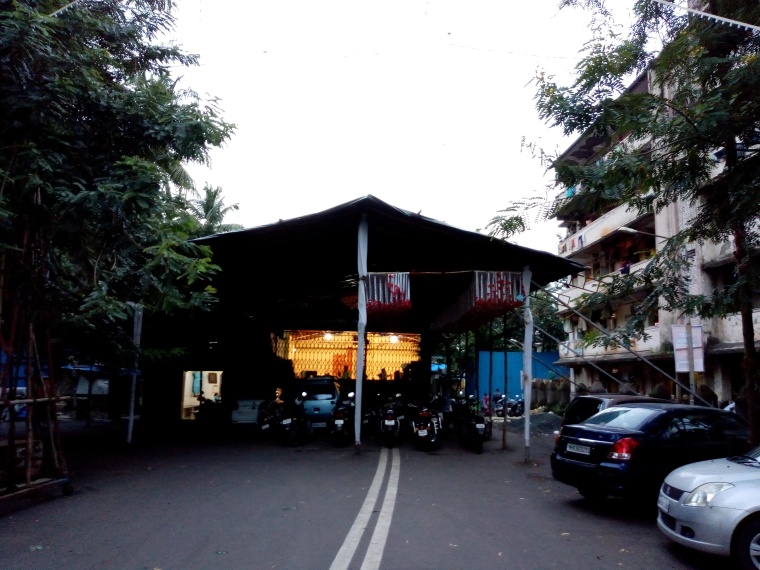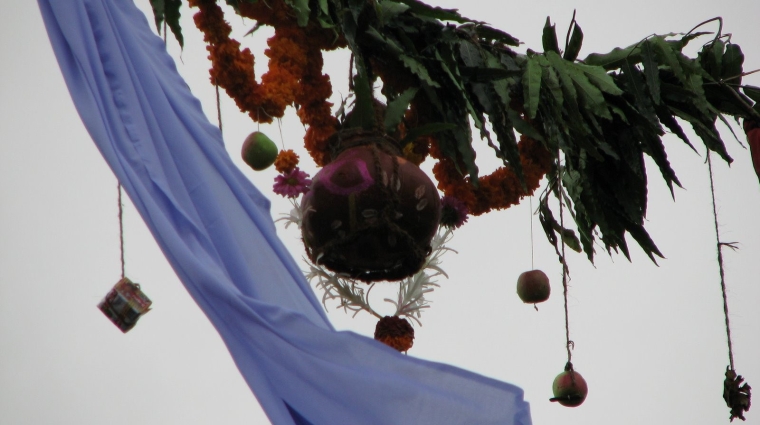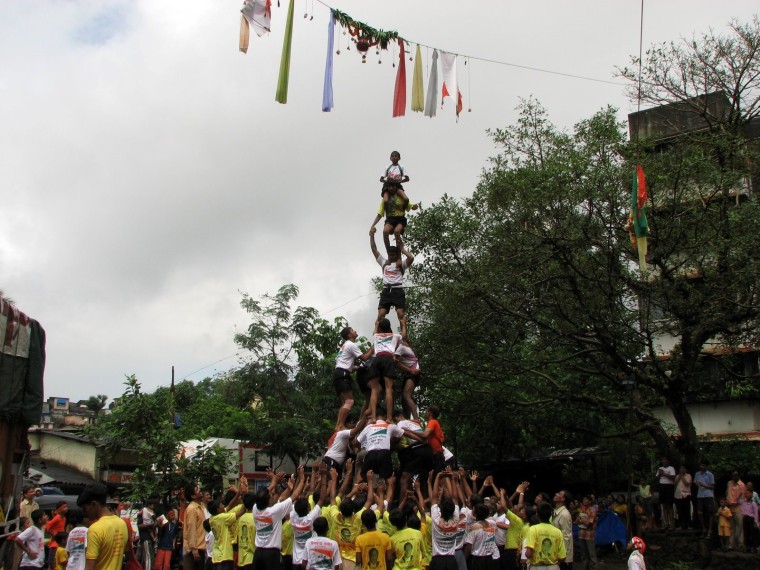Rohan Chavan
On September 13, 2018 you will find big pandaals (the temporary tents made of plastic and bamboos on roads or in vacant spaces in communities, height and length of around 30 to 50 ft) in almost every street of Mumbai. Mumbaikars celebrate the festival of Ganesh Chaturti, the birth anniversary of Lord Ganpati. This festival starts with creating murtis (idols) of Ganpati. One month before this festival you will find hundreds of artists making idols of Ganpati in all sizes and shapes, from 12 inches to 25 to 30 feet. In the past few years the shapes and designs of these idols have changed from simple traditional murtis to fancy TV serial and Hindi movies character. For example, a few years ago a Marathi serial ‘Jai Malhar’ was popular among Marathi viewers. That year many Ganpati murtis were made in the shape of the leading character of the serial Malhar. Traditionally, these murtis were made of clay but with increasing size the artists have started using Plaster of Paris.

This has been one of the seasonal employment options for artists followed by Navratri, when they start making murtis of the Goddess Durga. One of the towns in the outskirts of Mumbai, Pen is famous for these murtis. Most of the murti sellers set-up boards outside their shops saying “specially made murtis from Pen”.
Along with murti seller’s pandaals you will also find pandaals of different mandals. Mandals are the unregistered or registered group of people, youth groups, group of particular samaaj or caste who celebrates festivals like Ganpati and Navratri together and organize the entire event on behalf of the community, with some help – financial or non-financial from other members of community. Before the start of the festival, mandals undertake elaborate decoration. Some of the Ganesh mandals in Mumbai are famous for their decorative sets. These mandals spend lots of money and sometimes invite movie set artist to set up decoration for their mandal’s Ganpati. Most of these sarvajanik (community/public) mandals are celebrating this festival for more than 50 years. Every year on this occasion they collect donations from locals, politicians and other people who want to promote their products or businesses. They provide space for advertisements to these donors and they get money to celebrate these festivals.
Most of the karyakartas (members/volunteers/workers) of these mandals are youth. They work day and night to have everything in place. They spend those 11 days in that pandaal as part of their devotion to Ganpati and as their contribution to the mandals. The entire locality looks busy throughout the day and night for those two weeks.
Different mandals’ Ganpatis have different stories which attract devotees for e.g. Lalbaugchaa Raja is known as navasala paavnaaraa (the one who fulfills wishes of the devotee). People stand in queue for hours just to take blessings. There are few famous mandals like Ganesh Galli and Lalbaughcha Raja where sometimes people spend an entire day in a queue to take darshan. Bollywood celebrities also take part in this. During the entire month, one can find different kinds of energy on the streets of Mumbai. Most of the streets are decorated with light shows, people standing in queues with full enthusiasm and loud speakers playing songs and arati of Ganpati. This city is anyway one of the busiest cities but it gets even busier on festivals like these.
Rohan is a veteran Mumbaikar.


